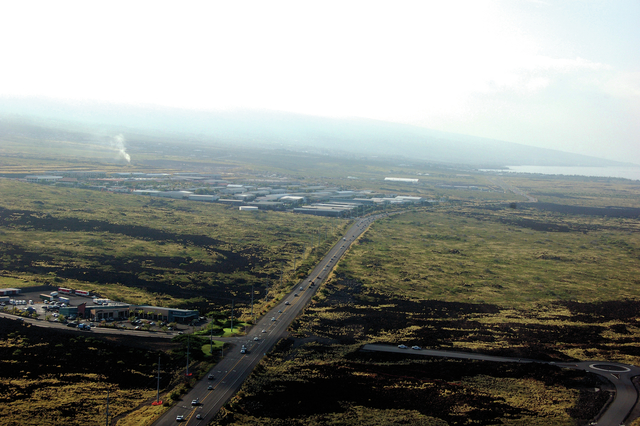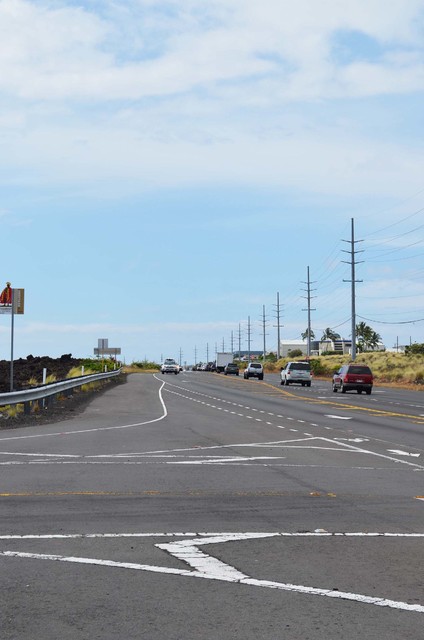West Hawaii got its first glimpse Tuesday of what the commute along Queen Kaahumanu Highway — or a trip to the airport — will be like for a couple of years. ADVERTISING West Hawaii got its first glimpse Tuesday of
West Hawaii got its first glimpse Tuesday of what the commute along Queen Kaahumanu Highway — or a trip to the airport — will be like for a couple of years.
It will be a busy time for construction crews working to widen the highway. The speed limit will be lower and 15 to 20 trucks will be entering and leaving the roadway. But Hawaii Department of Transportation officials say that access at existing intersections, turns and pedestrian crossings will be maintained and the work will be staged so that traffic is affected as little as possible.
“This has been a long time coming, and everyone wished it would have been sooner,” said Ed Sniffen, the DOT’s deputy director for roads, to a room of about 150 people at the Kealakehe High School cafeteria on Tuesday evening.
The DOT has given the general contractor Goodfellow Bros. Inc. the notice to proceed effective Sept. 1. The $100 million project will widen Queen Kaahumanu Highway from two lanes to four between Kealakekehe Parkway and Kona International Airport, providing signals, drainage, LED lighting and other improvements over a 5.2-mile stretch.
New traffic signals at six intersections will be interconnected and coordinated to maximize traffic flow, and the county will have the ability to control the lights to maximize that efficiency, Sniffen said. Eight to 10-foot shoulders will accommodate both cyclists and pedestrians.
Work will start on the makai side of the highway first, with four months of grading and utility work, followed by pavement from Hina Lani Street to the airport. The same work will follow on the makai side south of Hina Lani. Traffic will then be shifted to the makai side as workers complete the widening of the mauka portion of the highway by tearing up the weak portions of the existing asphalt and creating new lanes.
“We intend to recycle as much asphalt as possible,” said Ed Brown, project manager for Goodfellow Bros.
Truck volume will be fairly heavy because a massive amount of fill will need to be brought in from quarries, he said.
Construction of the asphalt roadway is expected to take two years. The speed limit will be lowered to 35 mph during the work.
“We’re going to be working six days a week the first year,” Brown said. “We’ll have very little night work.”
The project will make the crowded, dangerous road safer for all, said Kahu Danny Akaka during a pule for the new roadway.
“Far too many lives have been lost already,” Akaka said.
The project was first awarded six years ago, but was held up by cultural consultations, archaeological studies, and a realignment to avoid 23 out of the 76 historical structures in its path.
As part of an agreement with Native Hawaiian consultees, cultural and archaeological monitors will be assigned to each piece of earth moving equipment when it is working in previously undisturbed ground.
Numerous roadside memorials must still be removed so construction can start, Brown said.
“If you know anyone who has memorials out there, we’re trying to reach out to everybody,” Brown said. “We have to start the construction. The artifacts that are still there will be gathered and held for 18 months.”
Detailed information on the project is being provided on the website BuildQueenK.com, which includes a portal where feedback can be offered. The website will be regularly updated with progress reports, and a 24-hour hotline will be available for questions.
The DOT will also hold ongoing community meetings to keep the public updated, Sniffen said.




